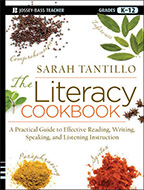
Although a seemingly simple concept, "cause and effect" is something that students often struggle with. Here are some suggestions for how to help them grasp the concept of cause and effect.
1. Stop doing things that don't work. For example, many teachers, esp. in lower grades, tell students, "Never start a sentence with 'because.'" On the one hand, I understand why they say this: they see students writing incomplete sentences that start with "Because." But this approach has two unfortunate consequences: 1) It prevents students from learning about DEPENDENT CLAUSES (so they are less likely to use them) and 2) It leads students to write illogical sentences in which they conflate cause and effect. I call this The "Because" Problem.
Here's what I mean by The "Because" Problem:
- If I say, "I like pizza because it has cheese on it," you will realize that I like cheese. That makes sense.
- If I say, "Pizza has cheese on it because I like it," that does not make sense. Pizza doesn't have cheese on it because I like it; pizza has cheese on it BECAUSE THAT'S THE RECIPE FOR PIZZA!
Students who are not taught how to use "because" properly tend to conflate cause and effect in this manner. The solution is to model how to use it properly and let them practice using it.
2. Show students examples of cause and effect. One way I've done this with HS students is by showing them the documentary Roger & Me and requiring them to take notes on the consequences of closing the GM plants in Flint, Michigan. Another documentary that can serve this purpose is Enron: The Smartest Guys in the Room. Both films provide many opportunities to discuss cause and effect, and they have the attendant benefits of teaching students about current events and economics as well as raising compelling ethical questions. The graphic organizers for this approach appear in the Download Zone (see below).
 3. Ask "Why?" more often. Students who EXPLAIN their ideas and arguments on a regular basis will become more comfortable with logic. And there are a few other benefits, as well (see The Literacy Cookbook for more information).
3. Ask "Why?" more often. Students who EXPLAIN their ideas and arguments on a regular basis will become more comfortable with logic. And there are a few other benefits, as well (see The Literacy Cookbook for more information).
4. Make sure students understand the difference between "how" and "why." See the TLC Blog post "Approaches to the Common Core: How vs. Why" for more insight into this problem.
IN THE DOWNLOAD ZONE for Cause & Effect:

